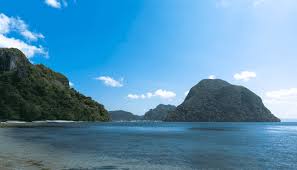The biggest sea in the world by surface area is the Philippine Sea. Covering an estimated 5 million square kilometers (2 million square miles), this vast water body is part of the western Pacific Ocean. It plays a crucial role in marine biodiversity, international trade, and climatic conditions.
This article explores the size, features, biodiversity, and importance of the Philippine Sea in detail.

What is the Biggest Sea in the World?
The Largest Sea by Surface Area
The Philippine Sea is the largest sea in the world based on its surface area. It surpasses other large seas, such as the Coral Sea and the Arabian Sea.
Comparison of the Largest Seas in the World
| Rank | Sea Name | Area (Million km²) | Location |
|---|---|---|---|
| 1 | Philippine Sea | 5.0 | Western Pacific Ocean |
| 2 | Coral Sea | 4.8 | Northeast of Australia |
| 3 | Arabian Sea | 3.8 | Between India, Pakistan, and the Arabian Peninsula |
| 4 | South China Sea | 3.5 | Pacific Ocean near China and Southeast Asia |
| 5 | Caribbean Sea | 2.7 | Between North and South America |
Location and Geography of the Philippine Sea
Geographical Position
-
The Philippine Sea is located in the western Pacific Ocean.
-
It is bordered by Taiwan, Japan, the Philippines, Palau, and the Mariana Islands.
-
The Mariana Trench, the world’s deepest oceanic trench, is found in this sea.
Key Features
-
Area: Approximately 5 million km².
-
Depth: The deepest point, Challenger Deep, reaches 10,994 meters (36,070 feet).
-
Islands: Includes the Mariana Islands, Bonin Islands, and parts of the Philippines.
-
Currents: Influenced by the Kuroshio Current, which impacts marine ecosystems and weather patterns.
Marine Biodiversity and Ecosystem
The Philippine Sea hosts one of the richest marine biodiversity regions in the world.
Notable Marine Species
-
Fish: Tuna, Mackerel, Swordfish
-
Mammals: Dolphins, Whales
-
Coral Reefs: The Tubbataha Reefs are a UNESCO World Heritage Site.
-
Deep-Sea Creatures: Unique species like the Dumbo octopus and deep-sea anglerfish.
Importance of Coral Reefs
| Feature | Details |
| Number of Coral Species | Over 500 |
| Role | Provides shelter to fish and protects coastlines |
| Threats | Climate change, pollution, overfishing |
Economic and Strategic Importance
The Philippine Sea is vital for global trade, fishing, and security.
Trade and Navigation
-
One of the busiest shipping routes in the world.
-
Facilitates trade between Asia, the Americas, and Australia.
-
Major ports include Manila, Kaohsiung, and Osaka.
Fishing Industry
-
Provides a major source of seafood for surrounding nations.
-
Home to lucrative tuna fisheries.
-
Contributes to the global seafood supply chain.
Strategic Importance
-
Used for military operations by the United States, China, Japan, and the Philippines.
-
Disputed areas like the South China Sea impact regional security.
Environmental Challenges
Despite its vastness and importance, the Philippine Sea faces several environmental threats.
Major Environmental Issues
-
Climate Change: Rising sea temperatures affect marine life.
-
Overfishing: Depletes fish populations.
-
Pollution: Plastic waste and oil spills harm ecosystems.
-
Coral Bleaching: Rising temperatures damage coral reefs.
Conservation Efforts
| Organization | Initiative |
| WWF | Marine conservation projects |
| Greenpeace | Anti-pollution campaigns |
| Philippine Government | Marine protected areas (MPAs) |
FAQs
Q1: Which is the biggest sea in the world?
A: The Philippine Sea is the biggest sea, covering 5 million square kilometers.
Q2: Why is the Philippine Sea important?
A: It is crucial for marine biodiversity, international trade, and climate regulation.
Q3: What are the threats to the Philippine Sea?
A: Overfishing, climate change, and pollution are the biggest threats.
Q4: How deep is the Philippine Sea?
A: It contains the Challenger Deep, the deepest ocean point at 10,994 meters (36,070 feet).
Q5: What can be done to protect the Philippine Sea?
A: Sustainable fishing, reducing plastic pollution, and enforcing marine protected areas (MPAs)





.gif)














Sign in
to continue to ilmkidunya.com